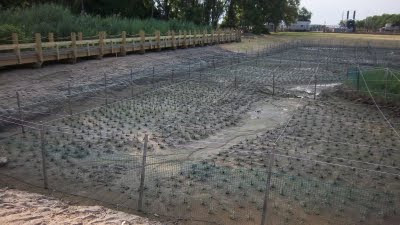The ecological awakening that began in the 1960’s and 70’s has reached the point where at least the most indiscriminant and blatant losses of natural areas must be publicly reviewed and often mitigated. Loss of ecosystems (and their almost incalculable values) to nearly every human action still occur everyday but the environmental laws and regulations and public opinion now serve as a substantial counter weight to unquestioned destruction. Projects that provide the whole range of human welfare - housing, transportation, commerce and even environmental protection - must move forward. This is what most people see as progress. But today, when land is changed, when resources are extracted, or when profit is made at the expense of nature, it is reasonable and proper to require the parties to restore some or all of what they have destroyed. They can do it and we must require that they do it.
Ecosystem restoration is applied science. It is applied ecology with a specific goal in mind. The term should be understood for its functional and not its literal meaning. It is probably impossible to restore a damaged ecosystem to its original pre-existing condition. The actors (i.e. plants and animals) and the stage (i.e. the soils and ecosystem flows) and even the theater (i.e. our global climate) are no longer the same. We simply cannot recreate exactly what existed before we arrived. Never could, never will.
But that is not really the goal of ecological restoration. The term Ecological Restoration (I love to call it by the initials E.R.) as defined by the Society for Ecological Restoration International is a much more useful and attainable goal.
“Ecological Restoration ER is the process of assisting the recovery of an ecosystem that has been degraded, damaged or destroyed.”
In the Wetland Preserve there are several efforts underway right now to restore sites within or just outside the preserve border. If you like to use Google Earth use the following lat/long coordinates to view these from above.
- On the west bank of Alley Creek, very close to the center, (400 45’ 44.95”N and 730 45’ 07.23”) there is a two acre upland and marsh restoration.
2. Just north of the preserve, on the north side of Northern Blvd.
3. Closer to the shores of Little Neck Bay is a slightly older and very successful marsh restoration completed in the 1990’s (400 46’ 03.34” N and 730 45’ 12.64” W) as part of a Port Authority mitigation for runway extensions at LaGuardia airport.
I’ve always said just give Nature a fighting chance and it can repair much of what we have done. That may be true but E.R. promises to do even more. It aims to give Nature just a wee bit of an advantage, a good starting boost if you will. When that happens Nature can do amazing things.



No comments:
Post a Comment